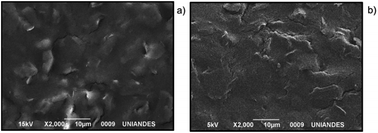Speciation of morin and rutin in black tea, Cymbopogon citratus and fruit infusions by adsorption voltammetry using screen-printed carbon electrodes coated with chitosan: effect of pH on speciation
Abstract
This paper presents the versatility of chitosan in the preparation of modified electrodes without the use of other substances. We present a sensitive and selective method of speciation for the determination of rutin (RT) and morin (MR) in natural products on a screen-printed carbon electrode coated with chitosan (CS-SPC). MR and RT may be adsorbed onto the surface of the SPC electrode coated with CS, increasing the intensity of the current by more than 60 and 45% for RT and MR, respectively, compared to that of the unmodified SPC. On the other hand, anodic peak currents were observed at the same potential value. This effect can impede the speciation for the detection of RT and MR in real samples. By evaluating the concentration of CS deposited on the electrode surface, a separation of 100 mV between RT and MR was achieved. Moreover, anodic peak currents for RT and MR as a function of the pH using a phosphate buffer solution (PBS) were evaluated, and the results clearly showed that in an acid medium, the MR signal is only 8.0% compared to that of the RT signal. These two parameters make speciation possible for the detection and quantification of RT and MR. Detection limits were 0.090 and 0.90 μmol L−1 for RT and MR, respectively. The relative standard derivations (RSD) were 3.5 and 4.0%, respectively. The accuracy was evaluated using a urine chemistry control spiked with known quantities of RT and MR. Finally, the usefulness of the modified electrode was evaluated to quantify RT and MR in commercial samples of black tea, as well as infusions of Cymbopogon citratus and fruits, which provided consistent results compared to previous reports.



 Please wait while we load your content...
Please wait while we load your content...